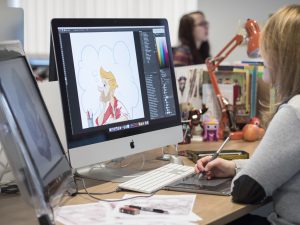 At emc design we are very familiar with adapting educational course materials for multiple markets. Often the International version will be adapted to suit different markets, territories and educational situations. As well as re-writing anything from 20-60% of the material the artwork and images are also adapted to suit these different versions and the newly written content. Re-versioning can range from a light adaptation to pretty much a completely different course so there are varying situations that will affect the complexity of an adaptation. However, there are a few things that are common to all so we thought it would be useful to share with you our top 6 tips for re-versioning artwork within educational course materials.
At emc design we are very familiar with adapting educational course materials for multiple markets. Often the International version will be adapted to suit different markets, territories and educational situations. As well as re-writing anything from 20-60% of the material the artwork and images are also adapted to suit these different versions and the newly written content. Re-versioning can range from a light adaptation to pretty much a completely different course so there are varying situations that will affect the complexity of an adaptation. However, there are a few things that are common to all so we thought it would be useful to share with you our top 6 tips for re-versioning artwork within educational course materials.
1. Your market: Every market has different guidelines for artwork that need to be followed when adapting educational material. For example, in artwork for the Middle Eastern market there should be no dogs, and in Greece you shouldn’t have the palms of hands showing. So if any of these things are happening and you’re looking to go into these markets you’ll need to get new artwork commissioned or amend your existing artwork.
2. The style: Also consider the style of artwork popular in your market when adapting. There is no use reusing artwork if it will fall flat with your target market. It is very costly to change the style of your artwork half-way through so it may be best to take a sample to market before making a decision on the whole course.
3. The artist: Do you know who the original artist is? Are they available to make amends? A good design team will be able to make minor amends in-house but for larger changes a copy artist will need to be lined up if the original is not available, and they’ll need to be able to match the style. (NB: If you are using a copy artist make sure you have some form of approval from the original artist. It is their unique style being copied.)
4. Licensing: Do you have the license to re-use artwork? Licenses can be market-specific and can in some instance be limited to that single edition. Many publishers have these rights built into their contracts but it’s always better to check that you have all the rights you need for reusing artwork in new edition and territory.
5. The files: Do you have the original layered artwork files? Without these it is hard to make amends to artwork if needed. And are they in colour? If something has been drawn in grayscale for an Activity Book or Resource Material it will be much harder to reuse it in a colour component further down the road. If you also have artwork logs it will be much easier to find all the reuse material when you need it!
6. What do you want your artwork to do? Is it illustrative, decorative, or necessary for an exercise? Consider the purpose of the artwork and how many amends may need to be made to it. How well will the existing artwork fit the new material? Amends will still need to be paid for so sometimes you might want fresh artwork that could be more modern and adaptable to your new content.
Leave A Comment